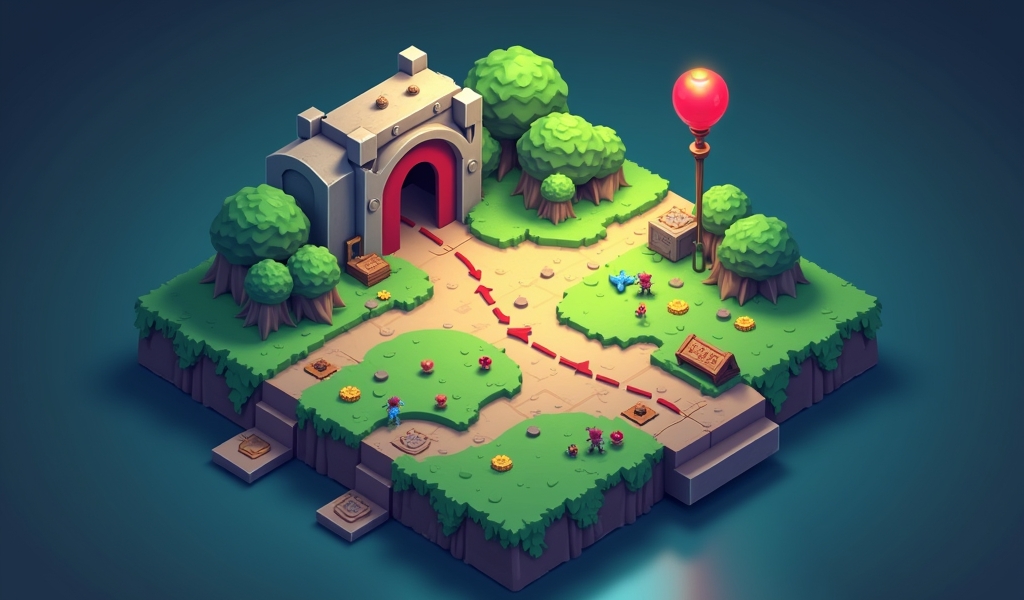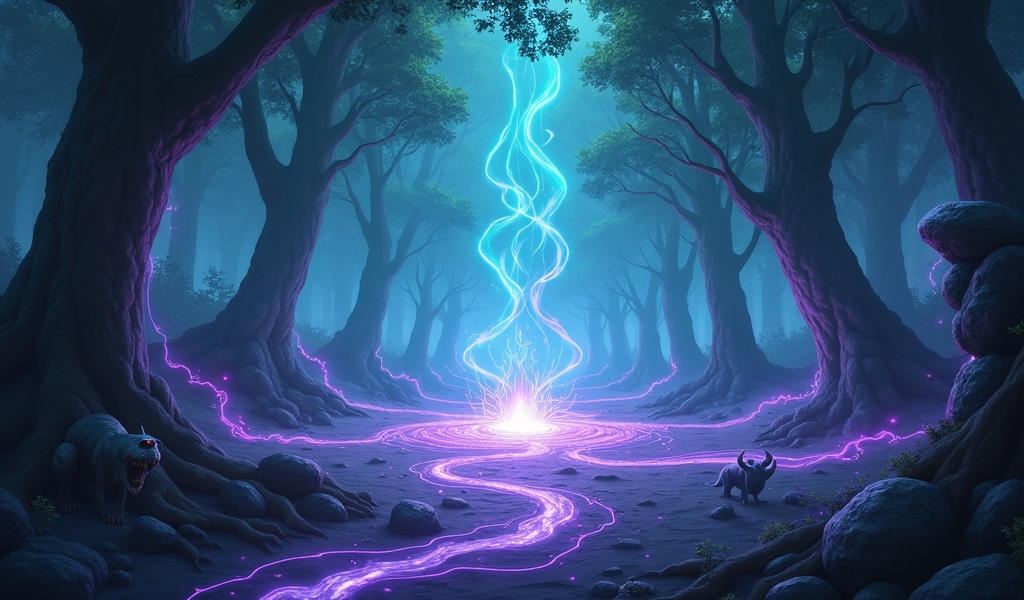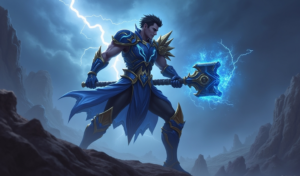Overview
Effective lol coaching jungler strategies can transform gameplay from random roaming to strategic domination by focusing on seven key areas: jungle clearing, champion mastery, ganking techniques, objective control, counter-jungling, vision control, and late-game impact. These comprehensive approaches combine mechanical skill with strategic thinking to help players consistently impact games and climb the ranked ladder, making jungle a position where knowledge and strategy can outweigh pure mechanical skill.
Table of Contents
Introduction to Jungle Dominance
Looking to level up your jungle game in League of Legends? You’re in the right place. Effective lol coaching jungler strategies can transform your gameplay from random roaming to strategic domination. The jungle role is arguably the most influential position in the game, capable of affecting all lanes and objectives simultaneously.
As a jungler, you’re the team’s catalyst – responsible for early game momentum, objective control, and supporting laners. However, mastering this complex role requires more than just knowing which camps to clear. It demands strategic thinking, adaptability, and map awareness.
In this comprehensive guide, we’ll explore seven proven paths to jungle mastery that have helped countless players climb the ranked ladder. Whether you’re struggling in Bronze or pushing for Diamond, these League of Legends coaching strategies will enhance your jungle impact and help you carry games more consistently.
Path 1: Master Your Jungle Clearing
The foundation of effective jungling starts with optimizing your clear. Efficient clearing is what separates good junglers from great ones, and it’s a skill that pays dividends throughout the entire game.
First, understand your champion’s strengths. Some junglers excel at full clears, while others benefit from a 3-camp rush to level 3 for early ganks. Learning the optimal clearing path for your specific champion is crucial for maximizing your early game impact.
Here are key techniques to master your jungle clearing:
- Practice kiting jungle camps to minimize damage taken
- Use ability combos efficiently to maximize damage output
- Time your Smite usage strategically for health management and securing camps
- Track camp respawn timers to plan your pathing
A common mistake many novice junglers make is following the same clearing path every game. Instead, adapt your pathing based on matchups, lane priorities, and your team’s win conditions. Professional LoL coaching often emphasizes this adaptability as a key differentiator.
Remember, each second saved in your clear translates to earlier ganks, faster objective control, and more pressure on the enemy jungler. Aim to shave off seconds from your clear time through constant practice and refinement.

Path 2: Develop Champion-Specific Strategies
Becoming a versatile jungler means mastering a pool of champions that can adapt to different team compositions and counter enemy strategies. However, depth often beats breadth when climbing the ranked ladder.
Focus on learning 2-3 champions thoroughly rather than playing a different jungler every game. This approach allows you to understand power spikes, matchups, and limitations on a deeper level. For instance, learning Lee Sin properly requires significant practice but offers tremendous playmaking potential.
When developing champion-specific strategies, consider these factors:
- Power spikes (level 3, 6, 9, and item completions)
- Favorable and unfavorable matchups against enemy junglers
- Synergy with your team composition
- Early, mid, and late game scaling potential
For example, champions like Kayn offer transformation choices that should be decided based on enemy team composition. Meanwhile, Jarvan IV excels at early pressure and team fighting but requires different build paths depending on whether you need to be the team’s engager or off-tank.
According to OP.GG statistics, players who specialize in a small champion pool consistently achieve higher win rates than those who frequently switch champions. Therefore, developing mastery with a few select junglers is often the fastest path to improvement.
Path 3: Perfect Your Ganking Techniques
Ganking effectively is perhaps the most visible aspect of jungle proficiency. A well-executed gank can snowball a lane, relieve pressure, or even tilt opponents. However, many junglers waste time on low-percentage ganks that yield little value.
The first rule of efficient ganking is prioritization. Assess your lanes based on these criteria:
- Gank setup potential (CC abilities, lane position)
- Snowball potential (how much a successful gank would impact the game)
- Counter-gank opportunities (where the enemy jungler is likely to appear)
- Lane state (is the wave pushing toward or away from your ally?)
Patience is crucial during ganks. Rushing into a lane without waiting for the optimal moment often results in wasted time or worse, a counter-gank that turns the tables. Good lol coaching jungler techniques emphasize waiting for the enemy to use key escape abilities before committing.
Communication is equally important. Coordinate with your laners using pings or chat to prepare for your arrival. This preparation might include having them bait the enemy into an aggressive position or saving their crowd control abilities to chain with yours.
Lane ganking (entering through the lane rather than river or tribush) and creative pathing can bypass common ward spots, increasing your gank success rate. Online LoL coaches often recommend analyzing your replays to identify patterns in your ganking that might be predictable to opponents.
Path 4: Control Objectives Like a Pro
In the current meta, objective control often determines game outcomes more than kills. Dragons, Rift Heralds, Baron, and even Scuttle Crabs provide team-wide advantages that accumulate throughout the match.
Successful objective control relies on three key principles:
- Timing awareness (knowing when objectives spawn)
- Vision control (securing sight around objectives before they spawn)
- Lane priority (ensuring your team can rotate to objectives faster than opponents)
Plan your jungle pathing to be near important objectives as they spawn. For instance, clearing your bot-side jungle around 5 minutes sets you up perfectly for the first dragon. Similarly, finishing your top-side camps near the 8-minute mark positions you for Rift Herald.
When approaching major objectives, assess the risk-reward ratio. Sometimes, it’s better to trade objectives (taking Herald while the enemy secures dragon) than to contest without proper setup. League coach services often teach decision-making frameworks for these situations.
Tracking the enemy jungler becomes crucial for objective control. If you spot them ganking top lane, that might be your window to secure dragon. Conversely, if they’re missing and dragon is up, approach with caution and consider whether you need team backup.
According to Riot Games’ own data, teams that secure the first two dragons win significantly more often, highlighting the importance of early objective control in establishing game momentum.
Path 5: Counter-Jungling and Invasion Tactics
Counter-jungling – the art of stealing enemy camps and creating jungle pressure – can completely dismantle an enemy jungler’s game plan. However, this high-risk, high-reward strategy requires careful execution.
Before invading, gather these critical pieces of information:
- Enemy jungler’s likely starting position and clearing path
- Lane priority in adjacent lanes (can your teammates help if needed?)
- Vision control in the target area
- Matchup advantage (can you win a 1v1 against the enemy jungler?)
The safest counter-jungling approach is called “vertical jungling” – taking the opposite side camps when you know the enemy jungler is on the other side of the map. This minimizes the risk while still denying resources to your opponent.
More aggressive counter-jungling involves direct confrontation and requires strong dueling capabilities. Champions like Lee Sin, Graves, and Kha’Zix excel at this playstyle. When executing this strategy, place deep wards to track the enemy jungler’s movements and secure escape routes.
Even when you can’t directly steal camps, placing deep wards in the enemy jungle provides invaluable information. Knowing where the enemy jungler is allows your team to play aggressively on the opposite side of the map with confidence. Many esports coaching for League programs emphasize the information advantage gained through jungle tracking.

Path 6: Vision Control for Junglers
Vision control is the unsung hero of high-level jungling. While it might not feel as impactful as ganking or securing objectives, proper warding and sweeping can determine the outcome of crucial moments throughout the game.
As a jungler, your vision goals should include:
- Tracking the enemy jungler’s position
- Securing vision around upcoming objectives
- Denying enemy vision in gank paths
- Protecting your own jungle from invasions
Strategic ward placement changes throughout the game. In the early game, focus on river control and entrance points to your jungle. Mid-game, prioritize vision around dragon and herald. Late game, secure the Baron and Elder Dragon areas.
Your jungle item’s trinket upgrade choice matters significantly. Generally, Oracle Lens (red trinket) is preferred on most junglers as it allows you to clear enemy vision before ganking or taking objectives. However, in some low-elo games where team warding is minimal, keeping the yellow trinket might be necessary.
Vision control is a team effort, but as the jungler, you should lead this aspect of the game. Communicate with your support to coordinate warding efforts. According to professional game statistics, the teams with superior vision control consistently perform better, even when behind in gold.
Path 7: Late Game Impact and Team Fighting
As the game progresses into mid and late phases, your role as a jungler evolves. Camp clearing becomes less important, while objective control and team fighting take center stage. Many junglers struggle with this transition, resulting in diminished impact as the game progresses.
Your late-game responsibilities depend on your champion archetype:
- Tank junglers: Initiate fights, peel for carries, and absorb damage
- Assassin junglers: Find flanks to eliminate priority targets
- Bruiser junglers: Disrupt enemy formations and create chaos
- Support junglers: Protect carries and control team fight zones
Position yourself according to the next likely objective and prepare the area with vision before your team arrives. Late-game Baron and Elder Dragon fights often determine the match outcome, so your presence and Smite timing become crucial.
Split-second decisions about engaging, peeling, or going for backline access separate good junglers from great ones. Review your replays to identify decision points where different choices might have led to better outcomes. This self-analysis is a cornerstone of effective lol coaching jungler improvement.
Remember that your ultimate goal is nexus destruction, not kills. Sometimes, the correct play is to skip a team fight entirely and push an undefended lane or secure an objective while enemies are distracted elsewhere. Strategic macro awareness becomes increasingly valuable as the game progresses.
Conclusion
Mastering the jungle role is a continuous journey that combines mechanical skill, strategic thinking, and adaptability. These seven paths to jungle dominance provide a framework for improvement, but true growth comes from consistent practice and self-reflection.
The most effective lol coaching jungler approach focuses not just on what to do, but why to do it. Understanding the reasoning behind pathing choices, gank timing, and objective priorities will help you adapt to the ever-changing meta.
Remember that even professional junglers make mistakes and learn from them. Don’t be discouraged by setbacks – use them as learning opportunities. Record your games, analyze your decisions, and continuously refine your approach.
By implementing these seven proven strategies, you’ll develop the jungle awareness and skills needed to consistently impact games and climb the ranked ladder. The jungle truly is a position where knowledge and strategy can outweigh pure mechanical skill, making it accessible for players willing to invest in learning the role properly.
Whether you’re looking to climb from Silver to Gold or push into the highest echelons of play, these fundamental jungle principles will serve as your roadmap to success in the ever-evolving world of League of Legends.
Frequently Asked Questions
What is the best jungler champion for beginners?
Warwick, Nunu & Willump, and Amumu are excellent starter jungle champions due to their forgiving mechanics, healthy clears, and straightforward gank patterns.
How important is tracking the enemy jungler?
Tracking the enemy jungler is extremely important as it allows you to make informed decisions about ganks, objectives, and counter-jungling opportunities without risking unnecessary confrontations.
Should I prioritize ganking or farming in the early game?
The balance depends on your champion’s strengths and the game state, but generally, aim to clear efficiently while looking for high-percentage gank opportunities that don’t severely disrupt your clearing path.
How do I recover if I fall behind as a jungler?
Focus on efficient camp clearing, look for safe gank opportunities, secure vision control, and try to participate in team plays that might provide shutdowns or objective bounties.
Is lol coaching jungler worth the investment for climbing ranks?
Yes, professional coaching can significantly accelerate your improvement by identifying specific weaknesses in your gameplay and providing personalized strategies to overcome them, often helping players climb multiple divisions faster than self-study alone.




